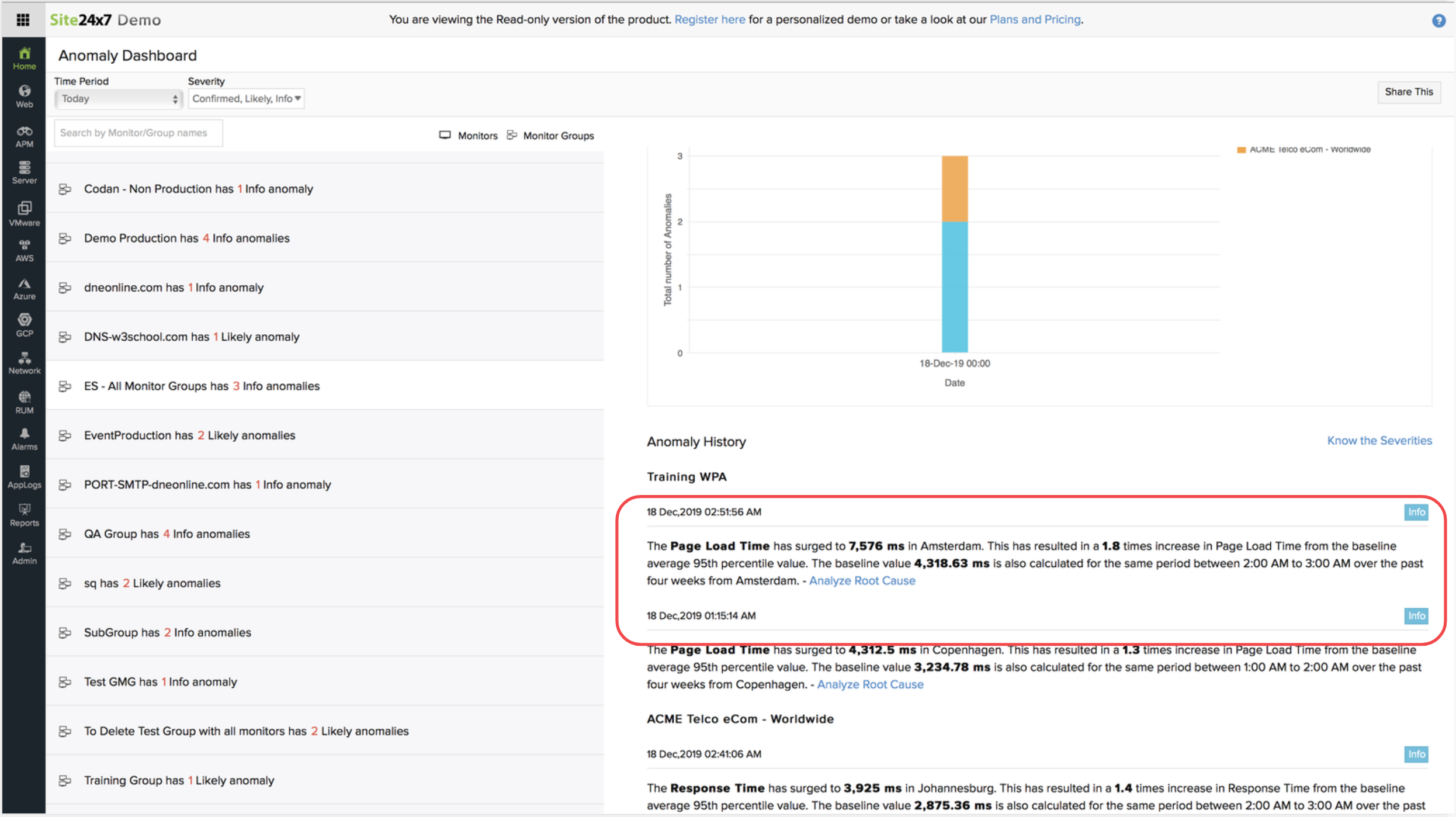How to use modern AI to optimise your business processes
- Last Updated : June 12, 2023
- 1.4K Views
- 10 Min Read

When it comes to Artificial Intelligence, there's a constant fear of missing out. But AI isn't going anywhere. If anything, the definition of AI has evolved so much over the years that you could already be using AI in your organisation without even realising it! In this post, let's talk about how AI has impacted our everyday life and how you can incorporate AI in a more strategic, effective way for your business.
10 years ago, software was considered intelligent if it could send reminders or generate monthly reports.
Automating complex workflows and if-else statements was so impressive we called that intelligent, too.
Then came technology that showed messages to visitors if they were on your website for more than 5 seconds. How intelligent!
Those are examples of traditional tech intelligence.
Nowadays, artificial intelligence goes beyond that. Modern AI systems process enormous amounts of data from the past to accurately predict an outcome in the future. Traditional intelligence only analyses existing data to try and create that prediction.
In other words, as a developer, you’ll create the operating rules for a traditional intelligent system. Then you will input data, and it will spit out a result based only on the rules you've set. In an AI system, you are still aiming for the same goal, but you allow the AI system to generate the rules that will get you there based on the massive amounts of data that you feed it.
Getting AI in your business
X + AI
AI doesn’t stand alone. To get the most out of AI, integrate AI with your current software system—your X factor. For example, one of the first AI functions we released at Zoho was for Zoho Creator, our custom application development tool.
For Creator's form builder feature, we introduced a 'recommended icon' function for each form a user creates. Our customers loved it. One customer even said they were building a form to collect all their leads in California, and the system suggested the Golden Gate Bridge as the icon.
Before you rush into developing AI features, take a look at your X factor. AI performs best when it's coupled with a system that's already functioning well. It may seem like a trivial enhancement, such as with the icon recommendation, but it can make a bigger impact than you realise.
From process automation to decision automation
For the last decade or so, AI has been an important part of process automation. For instance, if you have paper-based systems, AI helps digitise those systems so you can search, filter, and update that data efficiently.
Let's say you run an ecommerce business. In your warehouse, you'd manually record each delivery into ledgers before transferring that data into your ERP system. If you use a traditional AI system, you might replace the manual data entry with QR code scanning. This kind of AI can do three main things:
Optical Character Recognition (OCR) - Let's say you sell sports goods and search the term "Adidas" in your ERP system. Your search would return an image of a football and a t-shirt, both of which have the word "Adidas" on them. That's an example of character- or text-based recognition.
Object detection - If you search your system for "red shirt" or "blue skirt," you'll also find relevant answers. The AI function within your ERP system can recognise objects as well.
Forecasting - When you have an AI function within your system, it analyses data from a specific period to predict future patterns. An example would be predicting demand for certain products during special seasons. It can also evaluate your annual growth rate and suggest how much stock you should hold.
All of these are examples of automating your processes, which are now standard expectations for any AI system.
Modern AI goes much further—it enables decision automation as well.
For example, let's say you're shipping 500 pairs of shoes to your retailer. Based on the box size of each pair, you'll determine how many big boxes you'll need and how many pairs of shoes you can fit into one big box.
When you introduce AI into this system, it can automatically scan the dimensions of the boxes using vision technology and choose boxes in a way that optimises packaging and minimises expenses and waste. For instance, in some cases, it's more cost-effective and transportation-friendly to split 500 units between two boxes instead of using one big one. Your AI can automatically make such crucial decisions for you.
To learn more about this functionality, check out the package geometry feature in Zoho Inventory.
The goals of AI for organisations
An AI system in your organisation is meant to use automation so that you can:
Optimise your processes
Maximise your revenue
Here are some examples of AI-powered features that improve your business process.
Image scanning. A feature that scans documents, receipts, and images and automatically uploads the contents of the scan into the system. In Zoho Expense, you can scan your bills, and the system auto-generates the amount, place, date, time, and the category of expense.
Lead scoring. The AI uses a points-based system to grade your leads so your sales team knows which ones to prioritise. In Zoho CRM, you can filter leads by high and low conversion possibility.
Sentiment analysis. Helps you filter tickets from disgruntled customers so you can spend more time catering to their needs. Zoho Desk analyses customers' sentiment changes over time to help your support agent stay informed.
Conversational interface. A conversational interface helps your users search for data across your ERP system, combining results in one easy-to-read interface. For example, Zoho's own AI assistant, Zia, functions this way. You can search for an attachment someone emailed you, the order history of a specific unhappy customer, or the subscription model of a customer who wants to upgrade their plan—all in one place.
AI and privacy
One of the biggest concerns with AI, for most people, is privacy.
Data has become the cornerstone of so many business models today. For example, we don't pay for search engines and social networks—we exchange our data instead. Highly-efficient data collection and processing models are necessary now because AI requires massive amounts of data to be useful.
Consumer apps like Facebook and Google are the front-runners of using business AI effectively. The AI being used in businesses is no different than the AI that tracks your activities on social media and listens to your conversations through smart speakers. If that gives you reason for concern, we understand. That's why privacy regulations are so vital.
Consider medicine, for instance. If a patient with cancer agrees to share their data so that the healthcare system can offer them better, more customised treatment, is it fair for the system to use that data to advertise other products to them, such as a recovery pillow? This is entirely possible with AI. A truly corrupt business could even target consumers through that health data and charge them a premium on products, simply because they know they need it more than the average person.
Messed up, right? That's why privacy protection is critical in AI practices.
Increased data privacy requirements
Violating data privacy regulations not only affects your reputation, but also your financial standing. That's why you need to ensure that your business software systems handle user data responsibly. At the same time, you can't have data in silos and expect AI to work well.
AI needs data from all your departments to give you contextual information, like how your customer arrived on your website, which products they purchased, how they interacted with your help content, how long they've been using your products, what issues they faced, and how they were resolved. For example, this cross-system communication is essential for your AI to identify which elements of your product a customer paid for but isn't using. This feature could be an optional add-on or a freebie that your customer wasn't aware of. Because your AI identified it, you can use this information to educate your customers about the feature or stop investing in it if customers truly aren't getting benefit from it. In this way, AI helps you improve your products and deliver better customer experiences.
Integrated systems work well for AI
When your interdepartmental systems are well integrated, your AI can easily gauge the data it needs to function effectively.
Let's say you're using a text editor to create documents, but you run your content through a third-party grammar checker. In this case, you're risking exposing the contents of your business document to external trackers. The same applies when you use a third-party translation engine.
Some enterprise systems have built-in grammar and translation tools. However, those tools don't sync between all the applications you use in your business. So you'll end up with different suggestions between HR, marketing, sales, and email platform—all for the same copy. This inconsistency is particularly frustrating when it comes to grammar suggestions like sentence length, readability scores, and improper word choices.
When you choose your software, ensure that you can keep your data within your business. That's the ultimate key to avoiding privacy violations. For example, Zoho Writer has an extensive grammar checking system powered by Zia. This grammar checker is uniform across Zoho Mail, Zoho Notebook, Zoho Cliq, and everywhere else you type text. This is a good way to keep your business data intact and consistent.
Making AI work for your business
Once you've developed AI that'll work in tandem with the rest of your software systems, make sure you're getting the maximum benefit to your business. Here's some AI functions to look out for:
1. AI should explain itself
You often don't see AI systems explaining their conclusions. But at Zoho, the use of AI increased by 75% amongst our customers when we started giving explanations. One of our products is Site 24*7, a network monitoring tool. Its main purpose is to detect anomalies in a website's performance. The AI function within Site 24*7 is designed to translate its observations into human English. For instance, when there are severe delays in your website, it doesn't just flag the incident. Instead, it says something like this:
"Page load time has surged in Amsterdam on December 18. This is 1.8 times higher than the baseline calculated in a 24 hour-period over the last four weeks."

When you see a message like that, you'll automatically realise that your end-of-year sale has caused the delays. That's how conversational AI looks. This explanation is also important because AI isn't always accurate. When it makes a mistake, it needs human intervention so it can learn and rectify its mistake.
2. AI should offer probability statistics
As a business, you'll have certain operating procedures for when your website goes down. For example, you'll first inform your social media and support teams so that they can answer customer questions. You'll then inform the network team so they can see what went wrong. Finally, the product and development teams should be notified so they can support the network team in identifying issues and rolling out a fix.
Traditional AI will tell you as soon as you have an outage. It determines your site performance and helps kick off standard operating procedures in a downtime event.
To be more effective, however, AI needs to be probabilistic.
For example, let's say you don't have an outage. But your AI identifies enough issues to tell you that there is a 56% chance of experiencing a downtime during the Christmas period. In such a case, you shouldn't follow the same operating procedure we discussed earlier. You can have your network team double-check your systems more often to ensure you don't have an outage.
With probability AI, your response can vary based on the chances an event will occur. This ties back to your AI being explanatory. The more you know about why your AI makes certain decisions, the more effectively you can implement it and improve its quality for your business.
The future of AI
Correlation should imply causation
Even though AI technology is immensely advanced, it still doesn't rationalise. This means that when your AI deduces something or makes a decision that'll impact lives, we have to trust that it's making the right choices. It's also the reason it's hard to understand why an AI system fails—we can't always say which data is causing the AI to react a certain way.
The future of AI research and development is to make this process more transparent to human beings. Explanation AI, as we mentioned above, is one step in the right direction.
Keep humans in the loop
While AI can distinguish between a cat owner and a dog owner, it still has trouble identifying various genders, partly because of the commonalities between them and also because the concept of gender is evolving over time. Similarly, if you have an AI-powered grammar engine in English, it can't function the same way in French or German.
In early March 2020, when the world prepared for lockdowns, a UK-based online grocer blocked users for no apparent reason. They later realised that the AI system within the grocer's website interpreted panicked buyers as spammers trying to attack the system. If a human had been in charge of tracking the AI and its decision-making, they would've been able to intervene before the AI blocked customers.
That's why need an AI with a 'human in the loop' approach. Under this structure, a human adds value and context to the AI model by intervening at strategic points when the AI is faltering.
Takeaway
It often seems like the conversation around AI has advanced so much that it's beyond our understanding. But we still have a long way to go. From healthcare and manufacturing, to education and transport, AI research is ever growing and will impact everything around us. If you're developing AI for your business, train it with smaller, limited data points. Have humans and other more mature tech systems shadow and test your AI functionality. It's never too late to start thinking about incorporating AI in your business, but start small so you can maintain control.
As humans and as businesses, we learn and infer a lot from AI. Similarly, AI also learns from us. That's the path we're heading toward—a world where AI will complement human activity instead of replacing it. The sooner you start incorporating it, the less you will have to learn as AI becomes more and more integrated into our everyday lives.


